
(By Benoît Prieur/Wikimedia Commons)
As LAUSD announces safe zones, for some educators and parents, it’s still not enough.
On the first day of school for LAUSD students, minutes before her interview with CALÓ News, Guadalupe Cardona said she was going to be late because ICE had been spotted around her school.
Cardona’s interview happened at the heels of a press conference down the street from her school, where California Governor Gavin Newsom held an event with state and local leaders to address the gerrymandering happening in Texas and how California legislators are responding.
Border Patrol agents showed up outside the press conference, which was being held at the Japanese American National Museum, which features an exhibition memorializing the encampment of Japanese Americans.
Cardona is an ethnic studies leader in Los Angeles, and as the chair of the Association of Raza Educators, Los Angeles, she leads a group of educators who are invested in the critical empowerment of Latina/o/x students across the region. Before our interview through Zoom, she had spent the morning with United Teachers, LA (UTLA) patrolling Little Tokyo and the adjacent neighborhoods for ICE vans and possible interactions with students. Outside of teaching and curriculum development, this all happens outside of working hours for teachers like Cardona.
Just days before the first day of school, ICE had picked up an LAUSD high school student at gunpoint and had set the tone for the school year. Many raised questions: how would the district and city defend immigrant students and families? How can immigrant parents also feel safe to just take their kids to school? And outside of mutual aid and coalitions, what would institutions that have pledged solidarity do for immigrant communities?
“It’s scary, a scary time, so [we] have the conversations on what we can do if anything happens to her classmates or their parents,” Dulce, a mom of two children who attend LAUSD, tells me that she’s had to have hard talks with her kids about what is happening.
As has been the case for many parents, they’ve spent the summer reading headlines, sharing posts on Instagram and trying to identify ways to tell their kids that there is a police force around the city that is picking up people indiscriminately. For the parents who have the time, energy, and resources, they’ve taken it upon themselves to manage group chats, patrol certain streets, and keep their administration accountable.
“Unfortunately, like we're doing it [all] ourselves,” Cardona tells me during her lunch break. Many teachers, who are actively involved with UTLA, are going out of their way to help patrol and maintain group chats and rapid response communications for ICE sightings. On top of prepping lesson plans, facilitating educational development and the hectic beginnings of a new school year, teachers have had to do unpaid work in order to protect their students and parents from ICE.
“The governor and, you know, like anyone who is in charge any type of policy having to do with education in the state, really should be putting resources towards more of these types of trainings,” Cardona said. “It shouldn’t be that somebody sees it on their TikTok feed. It shouldn’t be like this word-of-mouth kind of rumor spreading around. We need to have a way to make sure that everyone is informed.”
Her words point to a central tension in Los Angeles right now: while ICE activity has long haunted immigrant families, the lack of formalized, institutional protocols continues to leave both parents and educators scrambling.
Last week, LAUSD Superintendent Alberto Carvalho announced the district’s “We Are One” campaign detailing the district’s commitment to protecting immigrant students and their families. In the press conference filled with a coalition of educators, unions and community providers, the message was passionate and direct: what is happening is affecting the learning of students, the teaching from educators and the overall community.
For some educators, the campaign is welcome but also too familiar. As one anonymous South Gate teacher told me:
“We really didn’t do anything different from what we have been told in the past. We don’t give information to anyone. They’re not allowed to enter our school building. This morning, parents were allowed to be on campus for the first day. There was more supervision outside at the gates with the administration, and some teachers as well, and that’s about it. We just continue to do the same as last year.”
The teacher emphasized that many of these practices — not sharing information with federal agents, increasing visibility of staff at entrances, ensuring parents feel safe — are long-standing, but largely reactive.
“It gives us the confidence [that] there is district-wide support for those of us doing things like this,” Cardona says, arguing that it isn't a policy for all educators in the district to protect students. “I'm not saying I want to get paid to do [patrol for ICE] but what I'm saying is by and large, you can't really expect to go out there and enforce that if you're not paying them to do it.”
Historical echoes and today’s climate
What makes this moment particularly urgent is that students themselves are beginning to see immigration enforcement not just as abstract history but as lived experience.
“This is my 26th school year,” Cardona reflected. “I’ve taught about the repatriation in the 30s and 40s and Operation Wetback. They happened even here in Los Angeles, where millions of people of Mexican descent, whether born in Mexico or born in the U.S., were deported. But this is the first time ever, in my history of teaching, that students actually understand what it looks like because they’re seeing it and they’re living it.”
The parallels between the deportation campaigns of the past and the raids happening today weigh heavily on classrooms. For students, it is not only frightening but destabilizing — a reminder that their safety, or the safety of their classmates, could be disrupted at any moment.
The need for structure, not just solidarity
Cardona describes a need for clear, systematized protocols:
“It shouldn’t be a rumor that you’re spreading, it should be confirmed,” Cardona said. “Because then what happens is resources that are volunteer resources are leaving work, leaving their homes, driving across town, to go confirm. And, you know, we’ve shown up before and it’s just the parks and recreation truck.”
Beyond the school gates, Cardona points to a broader need for businesses and employers to establish their own protections.
“Community members, store owners, and employers should also have a plan in place to shut their doors, protect their workers,” Cardona said.

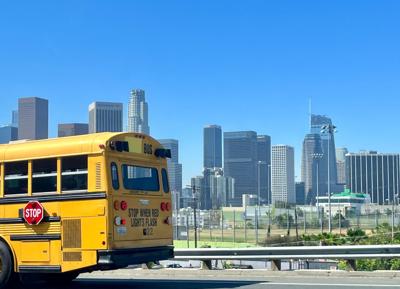
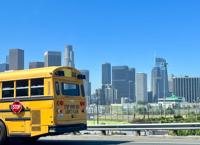



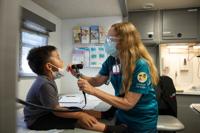

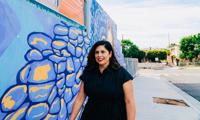

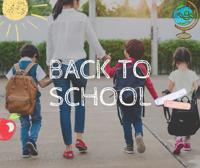
(0) comments
Welcome to the discussion.
Log In
Keep it Clean. Please avoid obscene, vulgar, lewd, racist or sexually-oriented language.
PLEASE TURN OFF YOUR CAPS LOCK.
Don't Threaten. Threats of harming another person will not be tolerated.
Be Truthful. Don't knowingly lie about anyone or anything.
Be Nice. No racism, sexism or any sort of -ism that is degrading to another person.
Be Proactive. Use the 'Report' link on each comment to let us know of abusive posts.
Share with Us. We'd love to hear eyewitness accounts, the history behind an article.